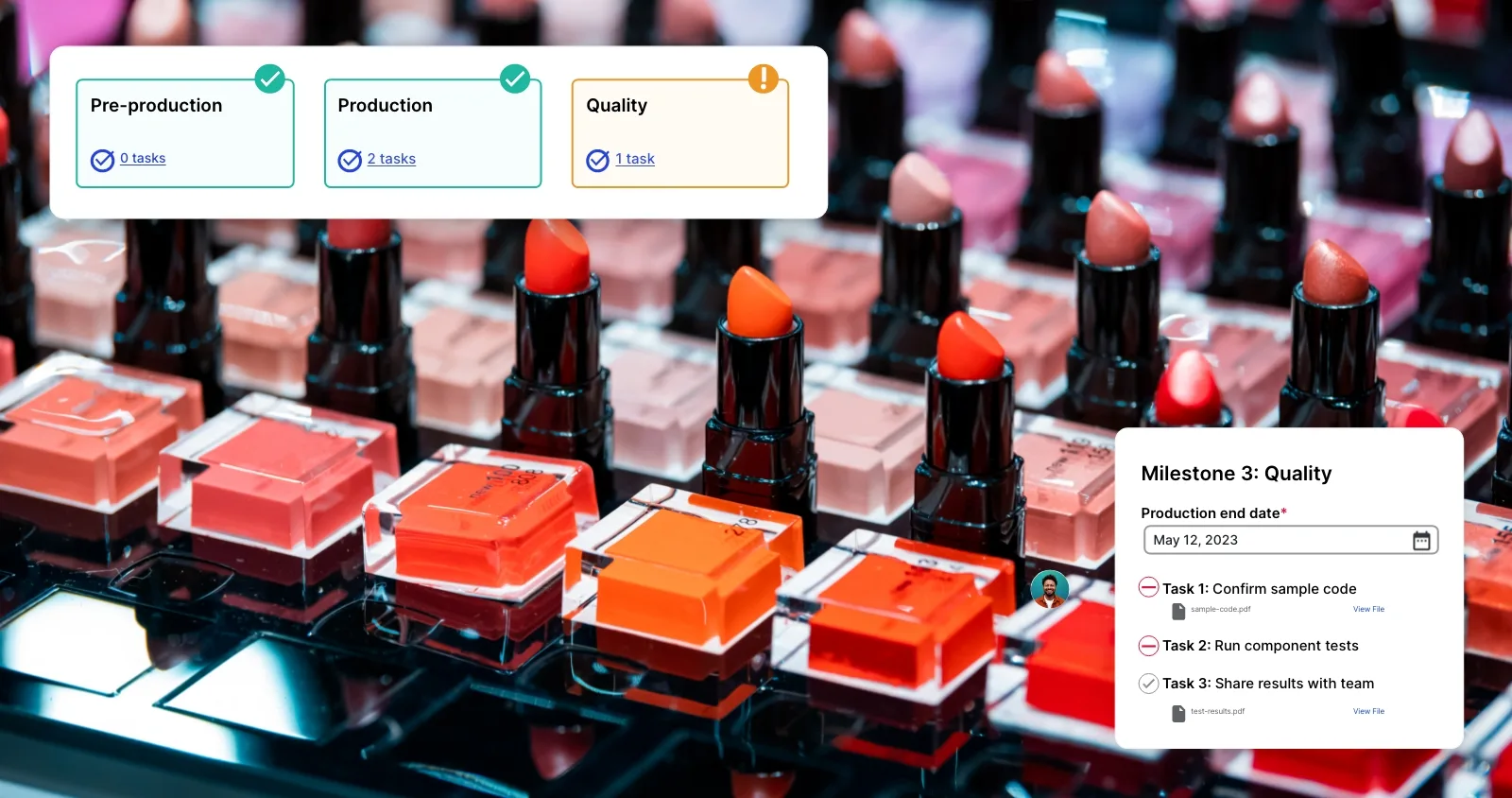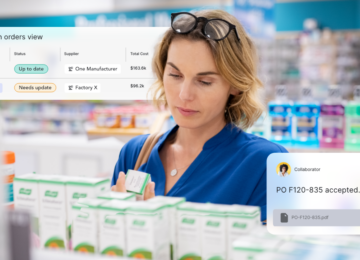Recent reports from Statista show that global revenue in the ‘Cosmetics’ segment of the beauty & personal care market is forecast to continuously increase between 2023 and 2028 by 25.1 billion U.S. dollars (+24.18 percent).
And after the eighth consecutive increasing year, the cosmetics industry is estimated to reach 128.89 billion U.S. dollars and a new peak in 2028.
This massive industry growth is mainly fueled by millennial shoppers who, in the second quarter of 2023, made up the largest share of consumers globally who shopped for beauty products online (48 percent), closely followed by Gen Z consumers, with 35 percent buying their beauty items on the web, and social media like TikTok, Instagram, and Facebook.
The result is a highly competitive market where consumers have higher expectations and more influence over how well new products sell.
Therefore, quality control in supply change management is crucial for cosmetic brands to stay competitive and produce new, high-quality products at scale.
Of course, maintaining stringent quality standards in cosmetic manufacturing is not just important; it’s non-negotiable.
Brands have to meet regulatory requirements in addition to quality standards.
Quality control processes such as raw material validation, in-house and third-party lab testing, and adherence to Good Manufacturing Processes (GMP) are ways brands maintain compliance and ensure that products meet quality standards.
So how can cosmetic brands best maintain compliance and produce consistently high-quality products to meet high demand in a highly competitive market?
Let’s explore some best practices for quality control in supply chain management and how best to integrate them into your cosmetics supply chain processes.
Quality Control vs. Assurance:
Before we dive into best practices for quality control in cosmetics, it’s helpful to distinguish between quality control vs. assurance.
While quality control and quality assurance are often used interchangeably, they represent distinct aspects of the production process.
Quality control is the systematic examination and testing of products to ensure they meet predefined standards.
For example, including certain raw materials or ingredients in your product and making specific claims about them means you have to test against claims to prove that the materials are in your product and proper documentation to prove levels.
On the other hand, quality assurance focuses on the processes used to create products, intending to prevent defects before they occur.
Both are important to overall quality management in cosmetics manufacturing, but we’ll focus on quality control in supply chain management with these best practices.
Best Practices for Quality Control
1). Choose Suppliers Strategically
Choosing suppliers goes beyond convenience; it’s a strategic decision that can significantly impact product quality. Consider factors such as speed, reputation, and expertise in testing, but also consider what factors are most important to you specifically.
For example, are the most critical factors for your brand related to speed, quality, or even people who can do testing for you?
Opt for suppliers who prioritize quality and have a track record of delivering high-quality products. Then, prioritize in-person visits to assess their facilities firsthand.
2). Conduct On-Site Visits
It’s ideal to schedule on-site visits to observe operations, evaluate cleanliness, and ensure compliance with safety protocols. But if traveling to see the supplier in person is not possible, at the very least, requesting a video call for a virtual tour or photos of their plant is essential.
Observe how busy (or not busy) the plant is, and notice whether or not people working on the floor are wearing proper safety equipment, for example.
The more direct insight you have into suppliers’ manufacturing practices, the easier it is to ensure that suppliers meet safety standards. This helps you make better-informed decisions about which suppliers to do business with.
3). Verify Qualifications and Certifications
Look for suppliers with relevant qualifications and certifications, such as ISO 9001 or ISO 14001.
These certifications demonstrate adherence to international standards and indicate a commitment to quality and environmental responsibility.
Most importantly, third-party certifications add an additional layer of confidence in the supplier’s overall compliance and reliability.
4). Ensure Regulatory Compliance and Safety
From ingredient sourcing to product labeling, every aspect of the supply chain must align with regulatory requirements. This is especially true throughout the first mile of the supply chain.
Supply chain solutions, like supply chain management software, play a pivotal role in ensuring regulatory compliance and safety by helping brands both centralize and verify essential documents faster and easier.
But they can also help brands optimize their overall supply chain by increasing visibility and strengthening supplier relationships.
5). Centralize Documentation
It’s common for cosmetics brands to store important documentation like raw material specifications, test results, and more in their email or online folders. And while suppliers usually have a copy of these important documents, they’re not easy to access at any given time. This slows down the quality control procedures and complicates supplier communication, which can cause miscommunication and unnecessarily strain supplier relationships.
Instead, centralizing documentation with tools like supply chain management software is key to streamlining quality control processes and maintaining stronger supplier relationships.
For example, important documents live within purchase orders in Anvyl, which helps brands and suppliers easily access documentation and immediately detect any errors before the purchase order progresses.
Supply chain management software can also help brands document processes and efficiently conduct regular audits to mitigate risks and uphold industry standards.
These audits help brands evaluate performance, benchmark performance between suppliers, and even help beauty brands identify opportunities to negotiate better pricing, streamline processes, and better collaborate with suppliers.
As a result, they can reduce costs without compromising quality and simplify supplier communication.
Conclusion
In the competitive landscape of the beauty industry, quality control is crucial for continued success.
By adhering to best practices, prioritizing regulatory compliance, and leveraging supply chain management software to help conduct audits and centralize documentation, brands can uphold and meet high product and consumer safety standards.
Ready to learn how supply chain management software like Anvyl can help you better manage quality control processes? Request a demo to find out.



